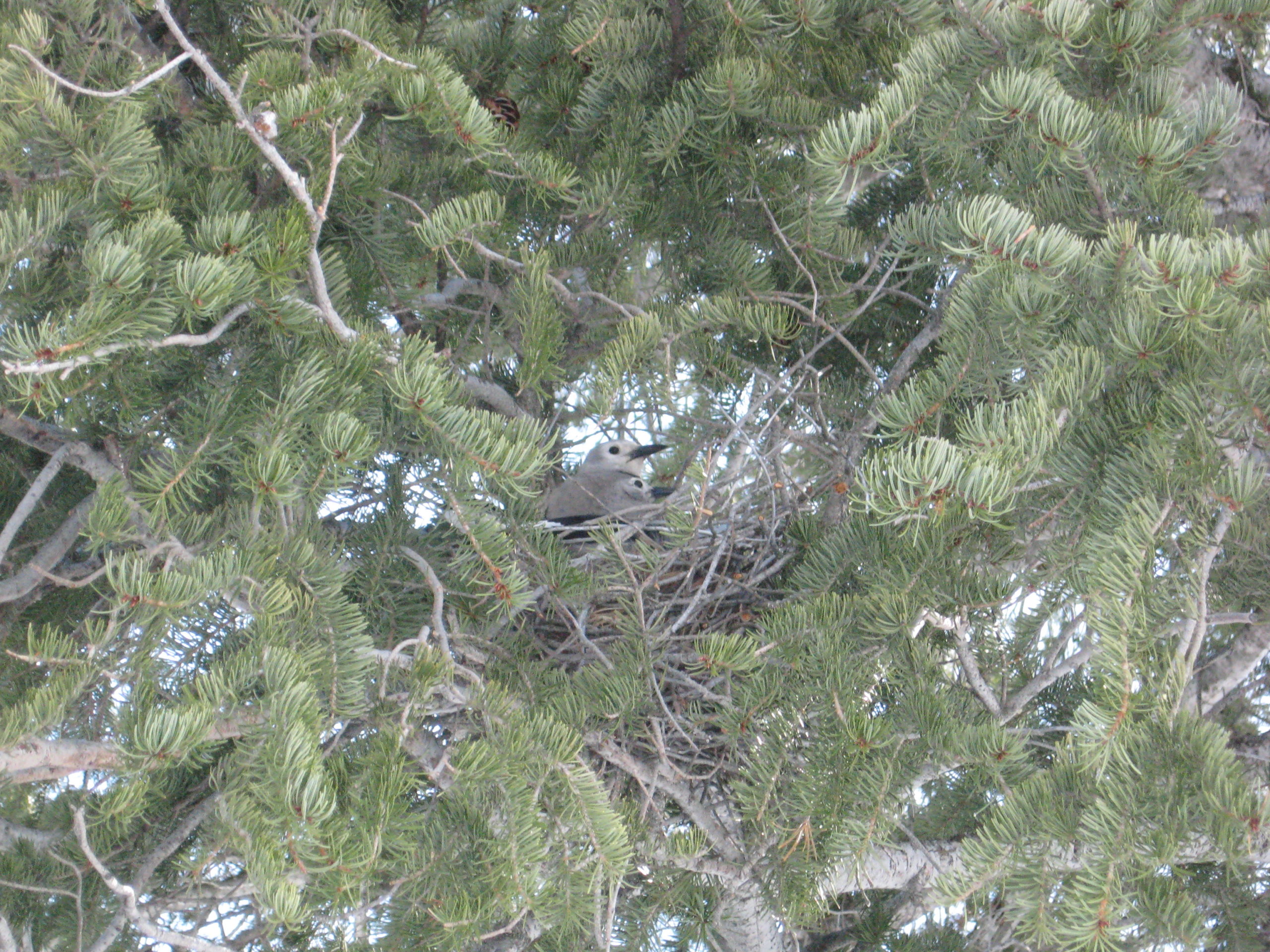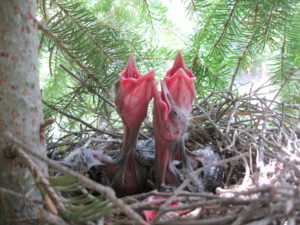
Contribute Clark’s Nutcracker Nests and Juvenile Sightings
 Taza Schaming of The Nutcracker Ecosystem Project seeks help from the public in locating Clark’s nutcracker nests and observing juvenile birds. The research group studies the environmental drivers of Clark’s nutcracker occurrence and reproduction, habitat selection and movement patterns, in order to improve local management strategies. All contributed data on nests, nutcracker breeding activity and juvenile observations will be included in an upcoming paper on nutcracker breeding biology.
Taza Schaming of The Nutcracker Ecosystem Project seeks help from the public in locating Clark’s nutcracker nests and observing juvenile birds. The research group studies the environmental drivers of Clark’s nutcracker occurrence and reproduction, habitat selection and movement patterns, in order to improve local management strategies. All contributed data on nests, nutcracker breeding activity and juvenile observations will be included in an upcoming paper on nutcracker breeding biology.
There have been few Clark’s nutcracker nests documented in the literature, so any nest information is helpful. Nests are made of twigs and sticks, approximately 8–12” wide by 4–9” high in size, and located 8–60’ off the ground. Nests are primarily found in conifers but can be found in live or dead trees and dense or open stands. Nest building typically begins in early March (but may be earlier or later depending on the location and year) and is the most easily observable sign of nesting. Nestlings should have all fledged by mid-June at the latest.
The best way to find a nest is to watch nutcracker behavior. If you see a nutcracker carrying twigs or insects around in the spring, there’s a good chance a nest is nearby. Also, if you see nutcrackers somewhere regularly in the spring, they’re likely nesting nearby most years. Nutcracker nests are difficult to find; however, it just takes careful observation of the birds in the right place and at the right time to find one. Please keep your distance to avoid disturbing the birds and interrupting the nest-building process.
To contribute observations, please collect the following information and email to Taza Schaming:
- Clark’s nutcracker nests: GPS coordinates and/or other location information; tree species and height of nest in the tree; nest status if known (i.e., building, eggs, nestlings); date located, and any other relevant details.
- Juvenile nutcrackers: GPS coordinates and/or other location information; number of adults and juveniles; date observed; and any details on the bird’s behavior. (See this identification guide to distinguish juveniles from adults.)
You also can learn more about Taza’s research in this WPEF webinar recording. Clark’s nutcrackers are so much fun to watch — enjoy!

